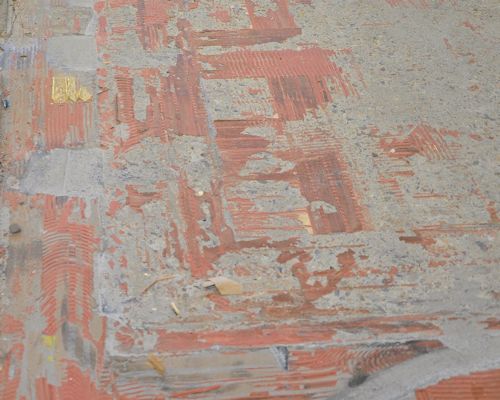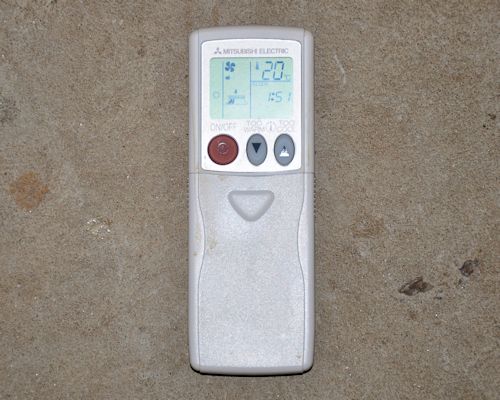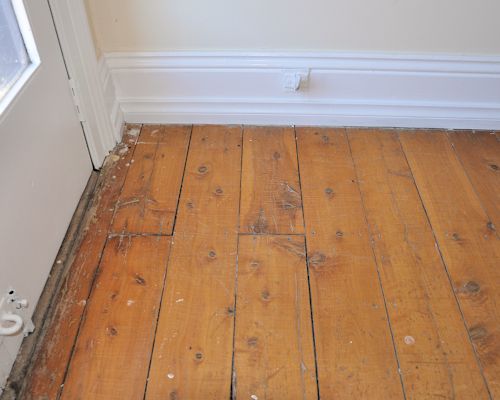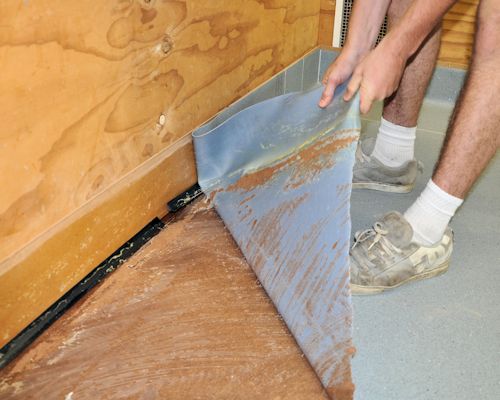Assessing the subfloor
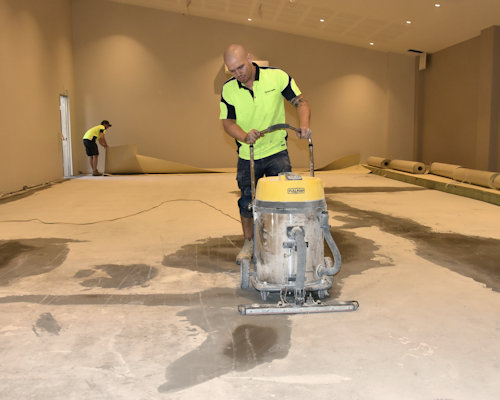 Audio for slide 1 (mp3 |6|KB)
Audio for slide 1 (mp3 |6|KB)
We've talked a lot about subfloor types and the different problems you might encounter when you're preparing the substrate for a new covering. These topics are covered in other units from the Flooring Technology resource.
If you need to refresh your memory on particular subfloor assessment and preparation techniques, follow up the topics listed below.
- Priming, patching, levelling and preparing different subfloors
- Grinding techniques and equipment
- Moisture testing, inspecting and descriptions of subfloor structures

 Audio for slide 2 (mp3 |6|KB)
Audio for slide 2 (mp3 |6|KB)
Below is a checklist of the questions you should ask yourself before commencing an adhesive-fixed carpet installation.
This checklist is similar to the one shown in the Carpet basics unit, with a few extra points that relate specifically to the use of adhesives.
Always keep in mind that as the flooring installer, it's your responsibility to decide whether the subfloor is suitable and has been adequately prepared.

 Audio for slide 3 (mp3 |6|KB)
Audio for slide 3 (mp3 |6|KB)
Check with your supervisor or manager before going ahead.
Everyone will be thankful in the long run, even if it means that there'll be a delay while the problem is fixed.

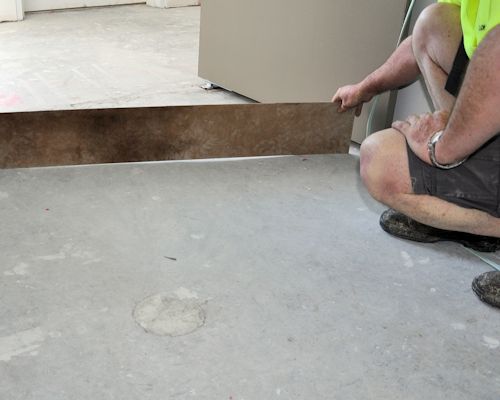 Audio for slide 4 (mp3 |6|KB)
Audio for slide 4 (mp3 |6|KB)
Questions to ask yourself
General issues
- Is the substrate smooth and flat?
AS/NZS 2455 has minimum standards for 'planeness' and smoothness'.
The planeness standard says that when a 3 metre long straight edge is placed on the surface at any position, no part of the surface is allowed to be more than 5 mm below the straight edge.
The smoothness standard says that when a 150 mm long straightedge is placed on the surface at any position, no part of the surface is allowed to be more than 1 mm below the straightedge.
Indentations, ridges and dents can sometimes show through to the surface of carpet. Ridges also tend to create wear points in areas where there is regular foot traffic or movement of furniture.

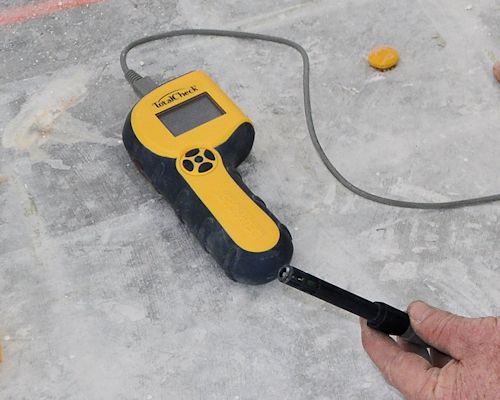 Audio for slide 6 (mp3 |6|KB)
Audio for slide 6 (mp3 |6|KB)
Concrete subfloors
- Are the relative humidity (RH) and alkalinity (pH) levels within the allowable limits?
Excessive moisture in the concrete subfloor can cause the carpet to change shape over time, and also allow fungal spores to develop.
There are limits set for RH and pH, both in the Australian Standards and in the flooring manufacturers' own installation instructions.
The only time you should over-ride these specifications is when an approved moisture barrier is being installed.

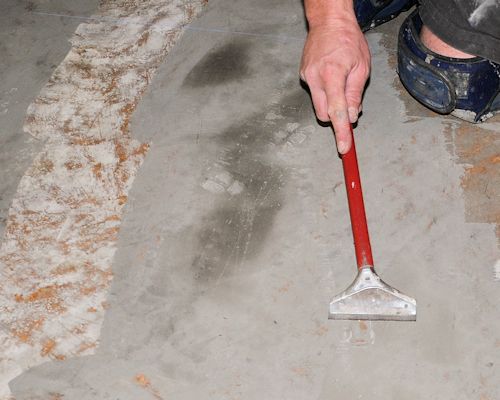 Audio for slide 7 (mp3 |6|KB)
Audio for slide 7 (mp3 |6|KB)
- Is the substrate sound and free from loose, powdery or scaly material?
If the substrate is concrete and you are planning to use adhesives, the surface must be sound and sufficiently porous to allow the adhesive to bond properly. If you're using nails to secure grippers, the substrate needs to be able to hold the nails without crumbling or cracking.
If it's not in good condition, the affected layer will need to be removed and resurfaced.

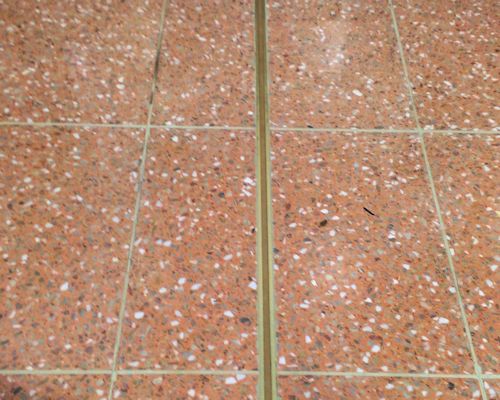 Audio for slide 8 (mp3 |6|KB)
Audio for slide 8 (mp3 |6|KB)
- Are there expansion joints in the floor?
Expansion joints need to be in good condition and free from dirt or obstructions. You'll need to keep them clear and finish them off with approved cover strips.
Don't get mixed up with relief cuts that have been put into the concrete to stop it from cracking during the curing process. These will be a 5 mm wide saw cut, and can be filled with a suitable compound.

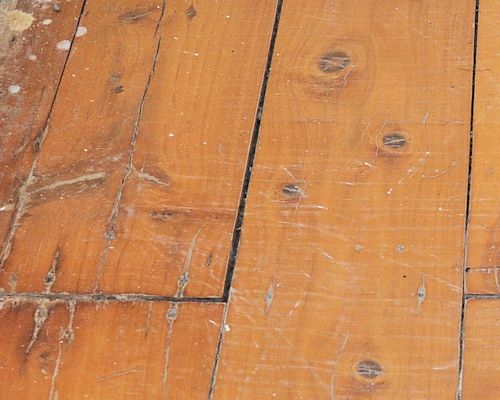 Audio for slide 11 (mp3 |6|KB)
Audio for slide 11 (mp3 |6|KB)
- Are there gaps between boards, protruding nail heads or other surface defects?
Gaps, ridges, cupped boards, protruding nails, and other defects will 'telegraph' through to the surface of the floor covering.
In general, structural floors made from plywood and strip flooring need to have a hard underlay placed on top to provide a flat smooth surface.

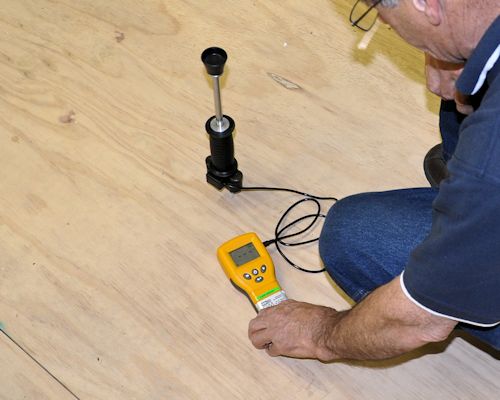 Audio for slide 13 (mp3 |6|KB)
Audio for slide 13 (mp3 |6|KB)
- Has the moisture content (MC) been checked and is it within the allowable limits?
The moisture content of structural members and floor boards or sheets must all be within the allowable MC range. There must also be no evidence of plumbing or stormwater leaks that might have a long-term effect on the MC.

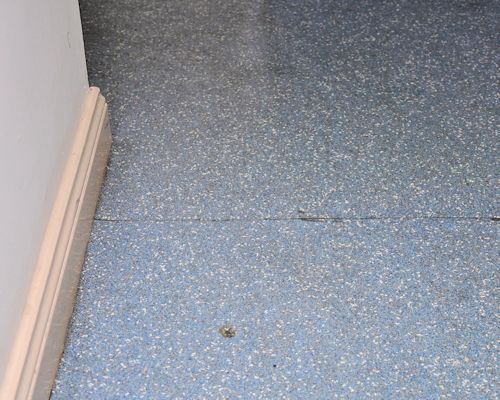 Audio for slide 15 (mp3 |6|KB)
Audio for slide 15 (mp3 |6|KB)
Another reason is that the new adhesive may not stick well to the top of the resilient covering, especially if it has old polish or ingrained contaminants on the surface.
Having said that, it is possible to apply an 'embossing leveller' to some existing floor surfaces, including resilients and quarry tiles, as a preparation for the new adhesive.
Different levelling compounds are used for different types of substrates, so you need to make sure you select the correct one for the materials you're working with.


Learning activity
Audio 16 (mp3 |6|KB)Why is subfloor moisture content an important consideration when you're laying dual bond carpet?
What are the main problems that might occur in an installation if the moisture content in the substrate was too high?
Let's say you have been asked to install dual bond carpet over a new concrete slab. What steps should you take to minimise the problem of rising moisture in the slab before you start the installation? Who takes final responsibility for deciding whether a subfloor is in a suitable condition for a floor covering installation?






